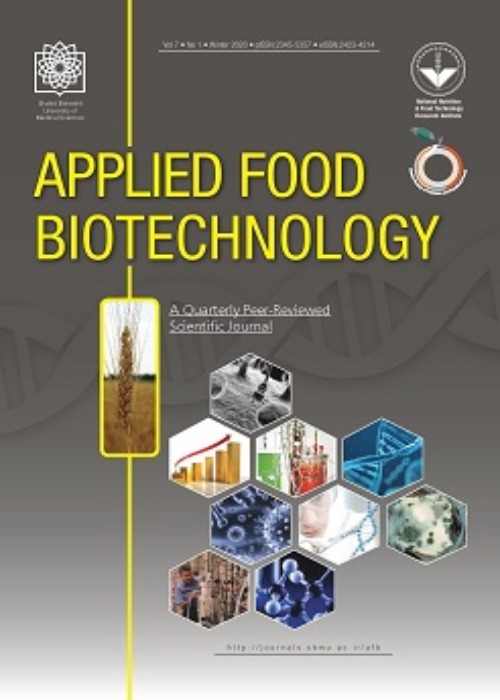Increasing P rotein C ontent of T omato P omace using S olid - S tate F ermentation with I ndustrial B akery Y easts
Tomato pomace as the major waste of tomato paste can be used in food formulation due to its nutritional and technological characteristics. The aim of this study was to create a cheap simple method to increase the protein content of tomato pomace, which could be used as a cheap and more efficient food source for livestock and poultry.
The study was carried out in three stages: 1) selection of further appropriate yeasts by assessing effects of two types of avaiable Saccharomyces cerevisiae and Saccharomyces bulardi industrial yeasts and fermentation time in the moisture content of 5% tomato pomace with particle size of less than 500 μm on the protein content of tomato pomace, 2) asessment of optimum conditions for increasing the protein content of tomato pomace by assessing effects of four parameters of the quantity of the yeasts, initial moisture content, substrate particle size and cultivation time in three levels, based on the Taguchi method in nine experiments in laboratory scale, 3) increase of the protein content of tomato pomace in bench scale tray bioreactor by investigation of three factor substrate depth, distance between trays and substrate particle size in three levels and one aeration factor in two levels based on the Taguchi method. Results and
Saccharomyces cerevisiae and 5 - d cultivation time were chosen to continue the study. Under optimal conditions in laboratory scale, 0.03 g dry yeast/g tomato pomace of yeast, moisture content of 70% (w w - 1 ), particle size of less tha n 150 – 250 μm (mesh 100) and process time of 5 d, protein content of 24.72% with fat content of 3.29%, ash of 16.45% and carbohydrate of 55.52% (w w - 1 ) were achieved. Under optimal conditions, including bed depth of 1.2 cm, tray distance of 4 cm, particle s ize of 250 - 500 μm (mesh 60) without aeration, the maximum protein content of 25.82% were achieved, which were more than 80%, compared to the primary tomato pomace protein content (14.21% w w - 1 ). This is the highest protein content already reported for toma to pomace, using the simplest technology at the lowest cost.
- حق عضویت دریافتی صرف حمایت از نشریات عضو و نگهداری، تکمیل و توسعه مگیران میشود.
- پرداخت حق اشتراک و دانلود مقالات اجازه بازنشر آن در سایر رسانههای چاپی و دیجیتال را به کاربر نمیدهد.


